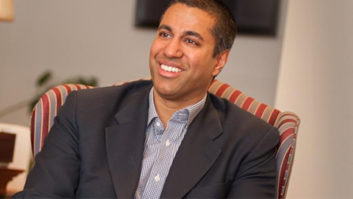When it comes to the AM band, “you’ve got a friend in me,” FCC Commissioner Ajit Pai wants all broadcasters to know.
Pai was speaking electronically to attendees of an AM revitalization session at the Missouri Broadcasters Association convention on Friday.
Citing the recent Oklahoma tornado that swept through Moore, Pai said the tornado that struck Joplin, Mo. a little more than two years ago can serve as an example today.
“In the wake of the Joplin tornado, when mobile phone service and the Internet were all but wiped out, broadcasters led by KZRG(AM) [on 1310 kHz] provided around-the-clock, uninterrupted coverage for nine consecutive days. KZRG told residents how to get disaster relief and connected people in need with people who could help,” said Pai in prepared remarks as he opened the session.
While the story of KZRG demonstrates the importance of radio during a crisis, he said, AM still plays a vital role in the U.S. each day.
Yet the senior band faces challenges, he noted, saying statistics show half of all radio listening was to AM in 1978, yet in 2010 that number dropped to 17%. For listeners under age 35, “that percentage drops to single digits.”
Since 1990, the number of AM stations has decreased while the number of FM stations has almost doubled, observed the commissioner. Based on his personal experience, AM signal quality seems to be a major factor. “Due to widespread interference, it seems to get tougher each day to receive a clear AM signal,” according to Pai.
That’s why Pai suggested the commission review its rules governing the AM band in an effort to revitalize AM. He thanks those who have sent him ideas and asked to keep them coming.
Questions to ponder he suggests are how can the FCC make it easier to obtain an FM translator and should the agency replace the minimum efficiency standard with a minimum radiation standard. Other questions are whether the agency should modify community coverage standards for AM and should a long-term goal be to transition stations to all-digital transmission?












